Some of the best things about travelling are the sensory impressions that we retain long after travel photos have become dusty memories in forgotten albums. Enjoy some sight, sound, smell, taste and touch impressions in Andalucía, from the Spanish south.
Words: Karethe Linaae PHOTOGRAPHY: Karethe Linaae & SHUTTERSTOCK
Some of the best things about travelling are the sensory impressions that we retain long after travel photos have become dusty memories in forgotten albums. Enjoy some sight, sound, smell, taste and touch impressions in Andalucía, from the Spanish south.
Words & PHOTOGRAPHY Karethe Linaae
When I visited India some years back I took several thousand photos, yet what stuck with me were the sensory flashes that I never could capture on camera. Take the Chai Wallahs running along the train at every station selling tea. I can still close my eyes and see them passing the scalding hot glasses through the train window.
I can hear them chatting in a mixture of Indian and English, politely yet hurriedly receiving their payment of a few rupees. I can feel the heat of the small glass in my hand, smell the aromatic brew and taste the sweet and subtly spiced chai. No single photo could do this experience justice. Like so many memories, it is a sensation that far exceeds a single frame.
Living in southern Spain, I am constantly hit by such sensory impulses. Of course, there are far too many to list, so I am limiting myself to a handful of choices for each of the senses. So without further ado, here are some of the sights, sounds, smells, tastes and touches that to me are the essence of Andalucía
Andalusian Visual Impressions
The Spanish south is sunny, breezy, rocky, ancient and simply stunning.

Amapolas
The first time we visited Andalucía we drove into the village of Nigüelas to have lunch. When a flock of sheep crossing the road forced us to stop, we saw this apparition across the way. Had Monet been with us in the car, he would have leapt out and insisted on painting it. This field has become our benchmark for flowering fields, and so far we have not found its equal.
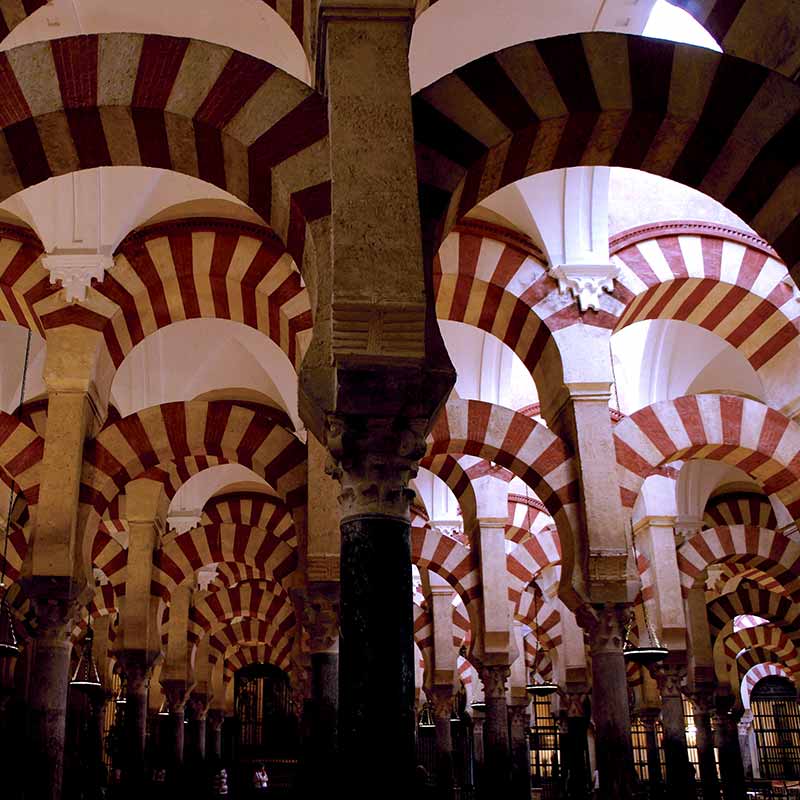
La Mezquita de Córdoba
Córdoba’s famous mosque is in my view one of the remaining Seven Wonders of the World. It doesn’t matter how many photos or documentaries you have viewed about it – when you are actually there and see it ‘live’, it is simply out of this world. I admit that there are multitudes of other astonishing places here, but when it comes to architectural structures, La Mezquita is beyond any other.
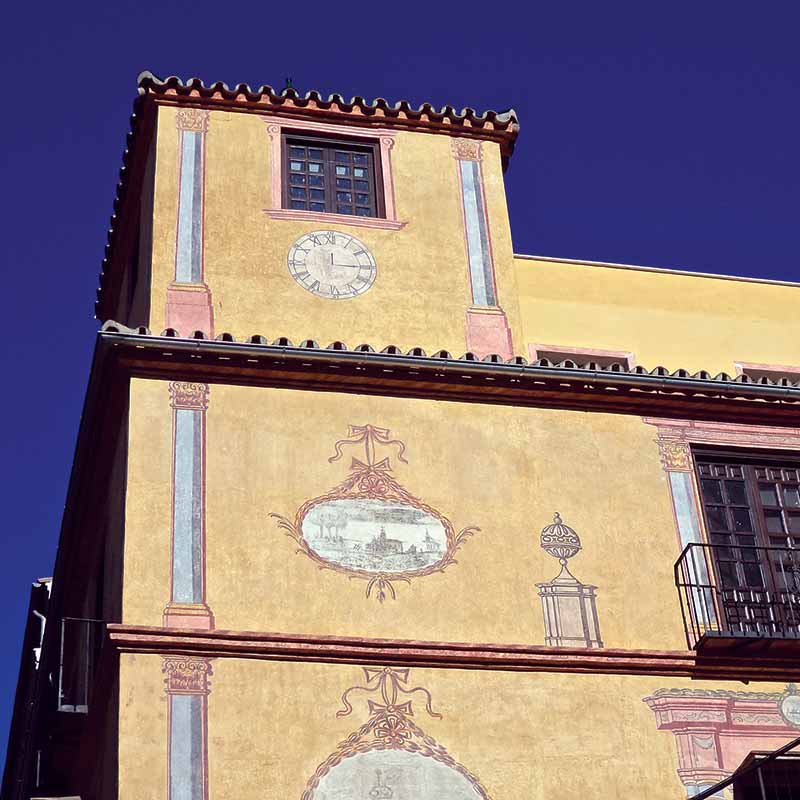
Colours
When I visualise Andalucía, I see warm and vibrant colours, like this classic building in the historic quarter of Málaga.
Andalusian Auditory Impressions
The sounds of rural Andalucía are completely different to those of urban centres. Instead of a steady hum of traffic interrupted by sirens, our ears are filled with braying sheep and prattling neighbours. These are some of my favourite audio impressions from Andalucía.

Baaas and Mouuus
Animals clucking and neighing like the song goes are no longer part of most people’s daily soundscape. For this reason, it is especially enjoyable to wake up hearing the braying sheep up the hill or a wailing donkey in the valley beneath us.

Bells Around the Clock
Church bells by day and by night. When we lived in Vancouver we never heard church bells, which were possibly outlawed due to excessive political correctness. Though neither of us are Catholic, I love to hear the bells morning, noon and night, as a reminder of the ceaseless passing of time. I learned as late as yesterday that the bells of la iglesia de Santa María la Mayor were pulled by human hands up to a decade ago. There are also different sounds for different type of Mass, from festive storm bells to the sombre tolling of luto or funeral bells.

Impromptu Performances
Andalusians are a spontaneous lot. On any social occasion our friends will leap to their feet and start belting out a song or dancing la Sevillana without any prompting. Rosie’s singing always brings tears to my eyes.
Andalusian Olfactory Impressions
As for the nose, what a treat! Andalucía simply exudes olfactory pleasures (and a few less desirable odours…)

Wild Herbs
As hikers in Andalucía, we always come across herbs growing in the wild. Cultivated herbs can certainly smell nice, but there is nothing lovelier than sticking your nose into a wild-growing thyme, a fragrant wild lavender or a shrub of wild rosemary.

Azar Heaven
While Southern Spain blesses us with fragrant blooms, none has a more divine perfume than the azar, or the orange blossom. To experience the orange trees at their peak, head to the Lecrín valley in mid-May and you will think that you have gone to Nirvana.

Holy Incense
Ever since our first Easter in Spain, my nostrils remember with fondness the fragrant incense of Semana Santa. The scent lingers in the air, seeping out from stores, chapels and homes. I have thought about stealing one of the incense dispensers they use in their Mass, but so far I have managed to hold back. The smell of hundreds of candles lighting up a dark church interior combined with the incense feels mysterious, timeless and even, for a quasi-heathen like myself, holy.
Andalusian Gustatory Impressions
Oh, decisions, decisions. Andalucía is a tasters’ paradise, particularly since everything comes in bite-sized tapa format. Nearly every fruit and vegetable under the sun can grow in southern Spain, while you can find local organic olive oil, delicious sheep milk cheese, free range eggs and superb tinto wine from the area, if not from your own neighbourhood. Difficult as it is to narrow down the top taste choices, here they are:
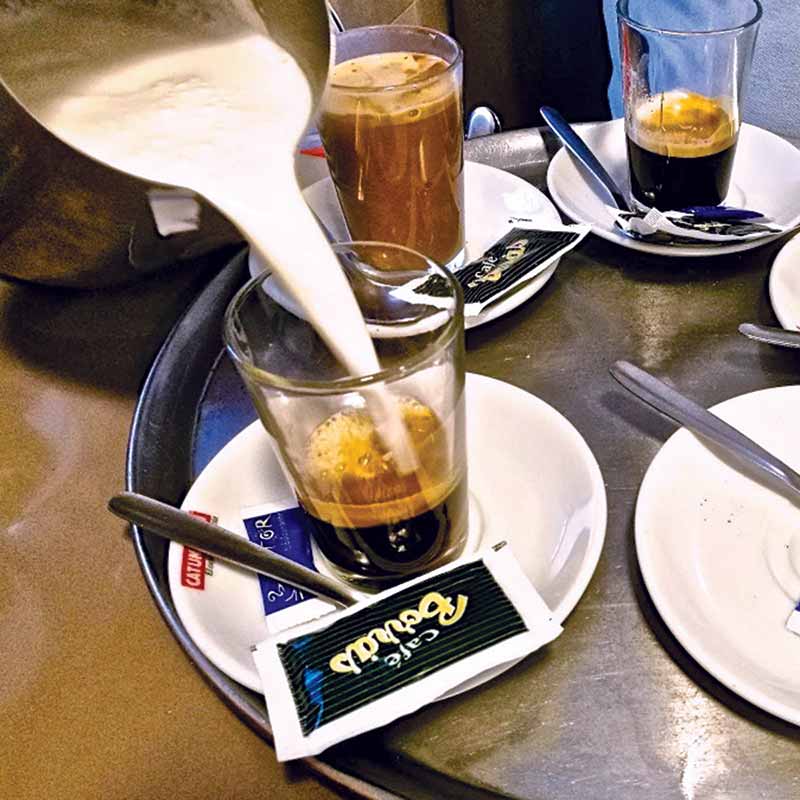
Café con Leche
I have a weakness. I never used to like coffee in Canada – usually meaning Starbucks’ milky brown substance served in giant environmentally devastating paper cups. Since moving to Spain however, I have become hooked. Once in Málaga, sitting with my far too healthy herbal brew, I observed my husband getting a glass of dark-as-my-soul espresso, into which the waiter splashed some milk. The latter can make up any one of ten colour variations, as here in the Province of Málaga we do not measure shades of grey. We like our shades java brown.

Tomates Aliñados
For all the more elaborate dishes on the menu, I like the basics. When the enormous black tomatoes and the Corazon de Toro tomatoes are in season, nothing beats tomates aliñados – tomatoes simply dressed with course salt and olive oil. Some will add chopped garlic or a pinch of dried herbs, but when it comes to this dish I am a purist.
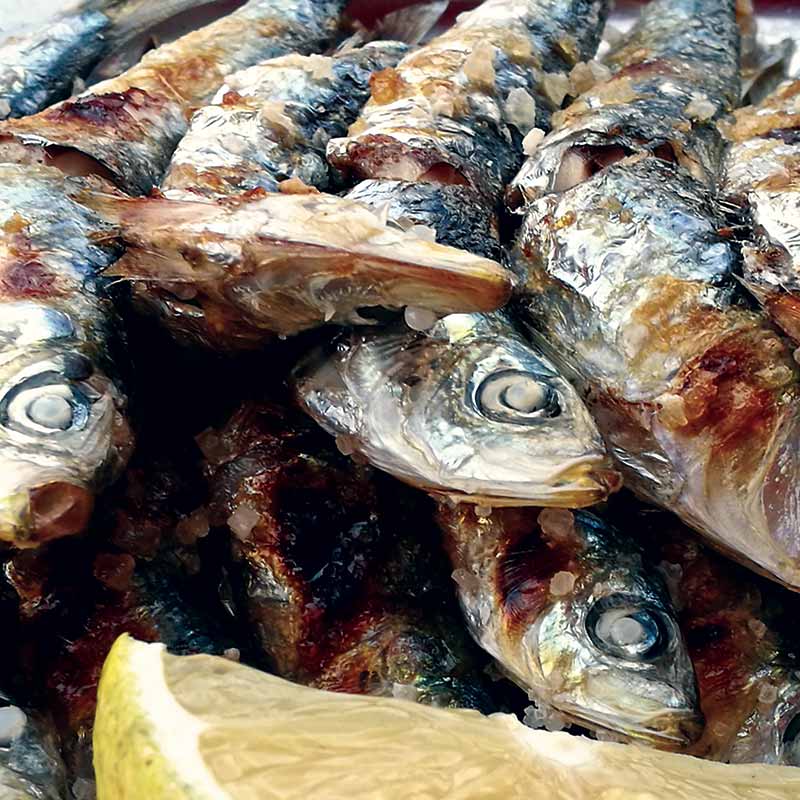
From the Sea
Having both the Mediterranean and Atlantic Ocean close at hand, we are spoilt for choice when it comes to fresh seafood, (while there is still life in the oceans…) If you haven’t tried it yet, order the locals’ favourite, a skewer of sardines cooked over flames at a beach chiringuito. This fabulous summer treat should ideally be accompanied by a bit of an ocean breeze and the smell of a tarred pier.
Andalusian Tactile Impressions
Of all the senses, touch is probably the one we are the least aware of and truly ‘in touch with’. Most of us are too busy being bombarded by visual and auditory stimuli to feel the subtler sensations under our fingertips. So, what are some of Andalucía’s most profound tactile impressions?

Touching Wood
“Touch wood” we say when we wish something to happen or hope that something won’t happen. Wood therefore, somehow equates to safety. This feels particularly true by the ancient Castaño Santo, a venerable old chestnut tree that grows on the old walking trail between Ronda and San Pedro. How could you not want to hug this friendly giant?
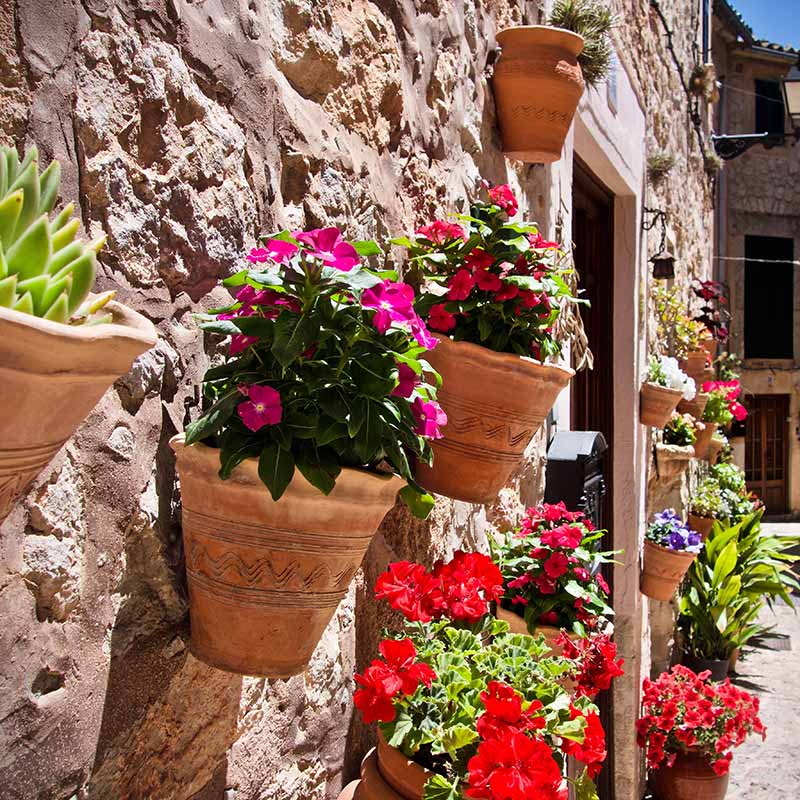
Feeling ‘Rustic’
Pots, tiles, walkways and kitchen wear, Terracotta plays an important role in the Mediterranean way of life and architecture. Hand cut and crafted, rough or glazed, wherever you look this salmon coloured material adds a rustic feel to the Andalucian landscape. It’s ragged edges and porous touch bring you back to and make you feel attached to nature.
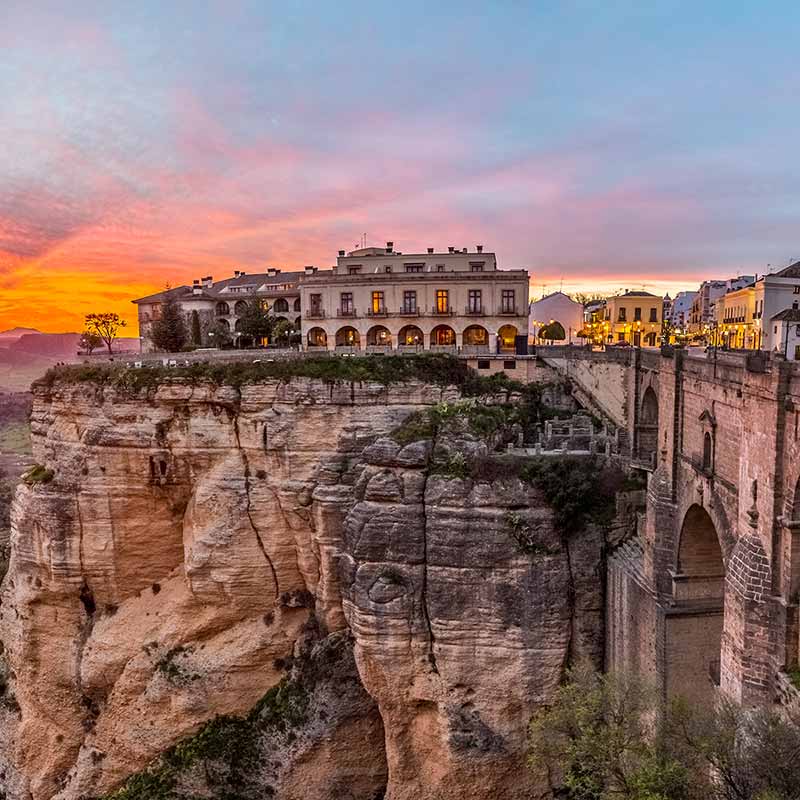
Touching History
Ronda is rock. We live on a rock split by a deep gorge. The landscape is peppered with rocks and everywhere we look we see the rocky Serranía de Ronda mountain chain. These rocks built the bridges over our Tajo, the walls that protected our town and the houses that gave people and animals shelter. The rocks came long before us and will outlive us into oblivion. Touching Andalusian rock is therefore touching a piece of timeless history. Your favourite sensations are probably completely different from mine, as we all hear and smell things differently. The importance is not what we sense, but that we sense at all. I hope that reading this will inspire you to celebrate the sensational sights, sounds, smells, tastes and touches wherever you may be.
ABOUT THE WRITER
Karethe Linaae is a Norwegian writer and author living in Ronda, Andalucía. Her book, Casita 26 – Searching for a Slice of Andalusian Paradise was published in USA in 2019. For more information, visit snobb.net
